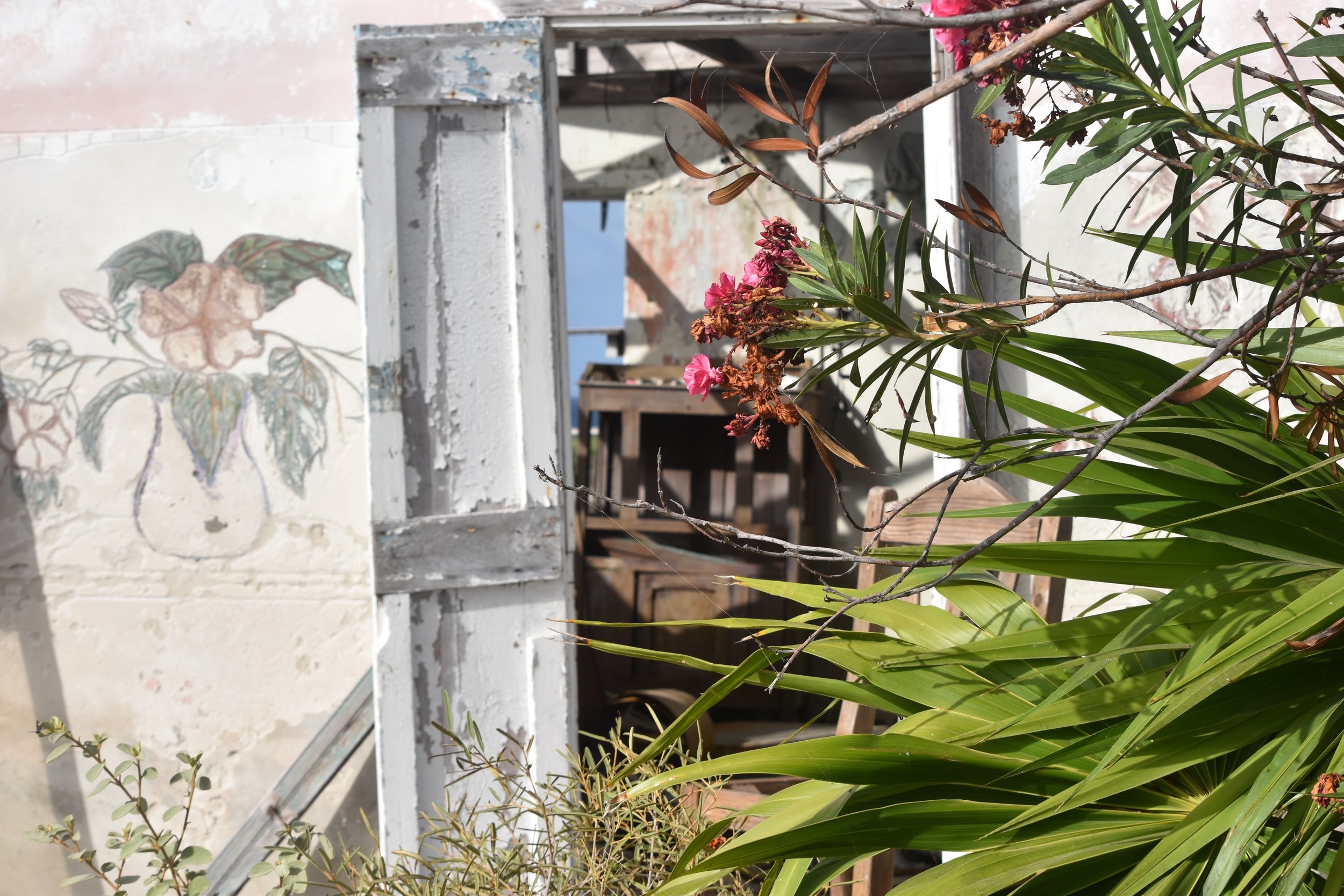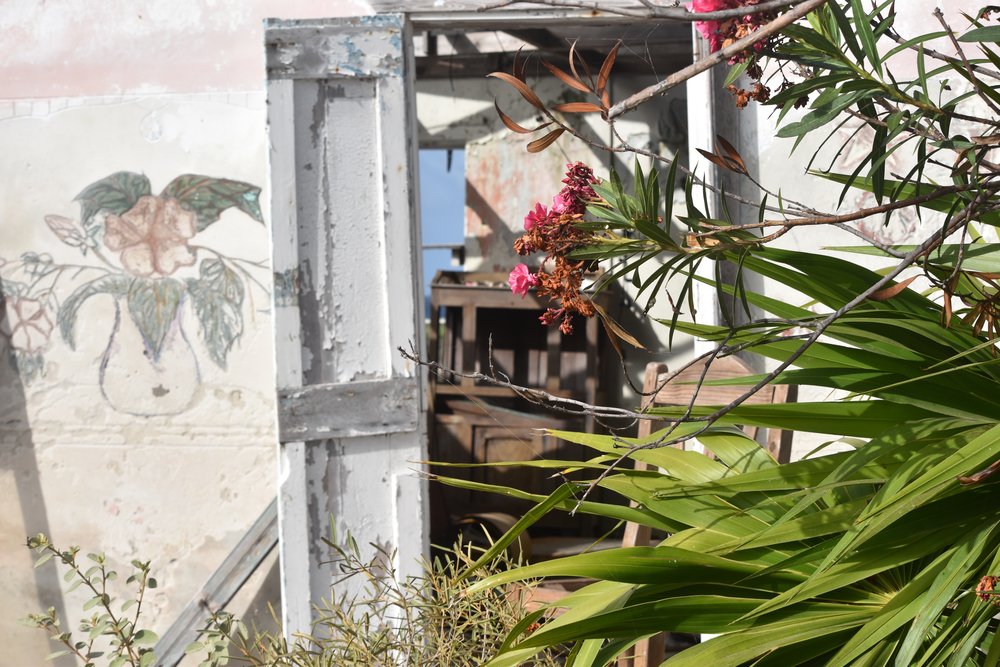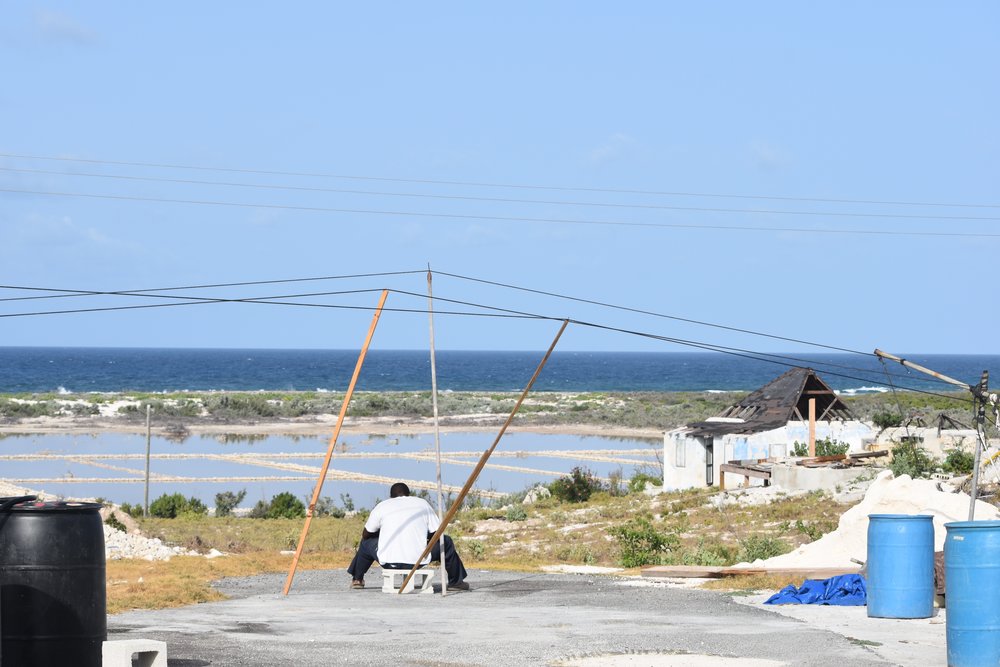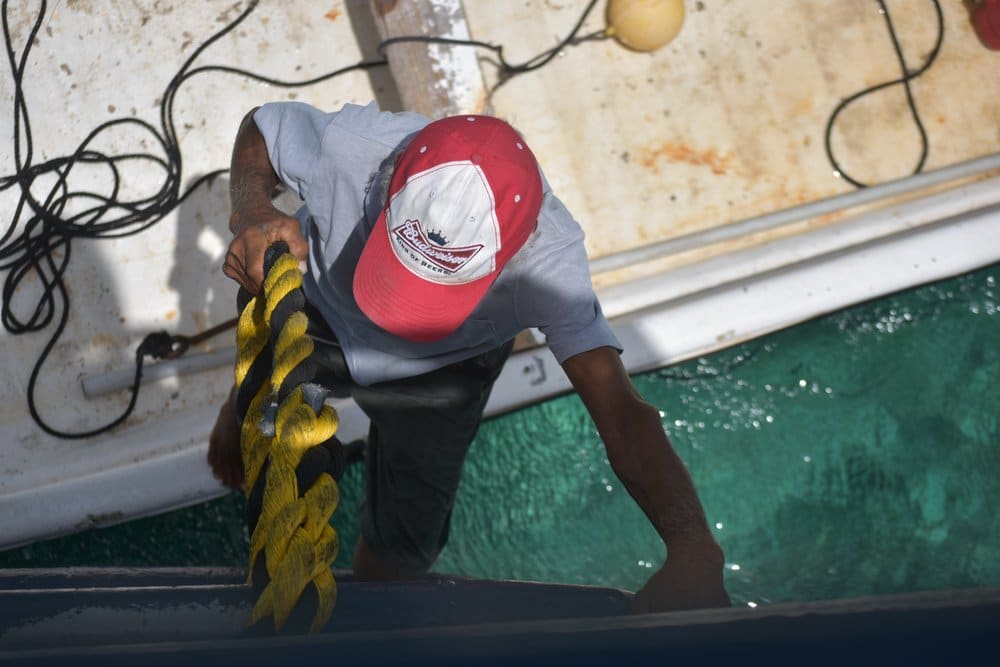
By Dr Ian Bethell-Bennett
The University of The Bahamas
The savagery of hurricanes is clear as people struggle to recover and survive.
This is the first of a three-part series that journeys through and to the Southern Bahamas, to Ragged Island. It is an exploration of connectivity, innovation and cultural erasure meeting with opportunity, though not for all. As a part of the content for The Bahamas pavilion at the Expo 2020 “Connecting Minds Creating the Future”, to be held in Dubai United Arab Emirates beginning on 20th October 2020, a group of researchers sought to collect data and stories of life in the tropics. The focus will be revealed as the stories unfold. With the theme of sustainability, the question becomes: can any of us be truly sustainable in a cultural reality that threatens erasure through natural and man-made situations?
We see island life in the works of Eddie Minnis and Alton Lowe, for example. One of the few pieces that capture the fury of the storm in the local context is Winslow Homer’s The Eye of the Storm, but even this depiction in realist fashion does not do justice to the savage impact storms have on the social fabric of a country, and indeed of all small communities in their path. This trauma and destruction is often missed, except this year as it has taken so long for the region to pull itself out of the post-2017 Hurricane season only to find itself smack dab in the middle of the 2018 hurricane season, and not much has been done to remedy the destruction, or, in fact, to prepare for this onslaught. This work more than exploring hurricane seasons and their impact rides on Bahamian cultural reality and its shifting.

Art in daily life. Blooms of oleander and sketchings on a wall on Ragged Island. Images courtesy of Dr Ian Bethell-Bennett.
There is an art to living in The Bahamas as so much of our culture and art attest, yet this is being slowly or radically changed by new and old realities that conflate to produce a new cultural norm. The act of devastation in the tropics now needs to articulate how cultures are disappearing under the stress of national disorganisation and diminution of governmental influence. To prepare this piece of writing in preparation for the annual Double Dutch project that the National Art Gallery of The Bahamas undertakes, a group of us journeyed from New Providence, under the Paradise Island Bridge, or as people refer to it, under the dock, on the mail boat, a system that is meant to connect all islands, cays and rocks of the archipelago. The trip was an exploration into Bahamian national culture, the art of living in the tropics so often eclipsed by the sparkling tourist adds that elide racial, class and gender stresses, as well as the unreality of their depiction, and the hardships of the daily grind.
As if to express the art of tropical living, one finds oneself moving through a hot, congested Potter’s Cay dock, thronged with drinkers and revellers, conch stands competing for custom and diners unsuspectingly tucking into a good, spicy bowl of national delight. As much as this place has changed over the decades, it has remained merely the same in its natural development, its organic state of emerging from the people. The conch is washed in salt water, knowingly contaminated by the sewage plant just on the mainland-side of the dock, now being erased by Water and Sewage. The universal sign of the tropics, the swaying palm or coconut tree, now chokes much of the disorganised parking area around the dock; no Dilly, Guinep or Mammy trees in these tropics. Nothing but palms will express the tropical art of life better, at least according to the controlling eye. As one approaches mail boats, the chaos deepens as cargo is loaded onto decks and into holds. This is the lifeblood of most communities on islands and cays. Freight taking consumes hours. Cranes swing in and out with cars, cement and palettes of rocks, plants, foodstuff and water. Departure time comes and goes, and there is no movement except for the beehive getting ready to deliver goods.

Drying lines; salt and pond life. Salt flats on Ragged Island.
The boat, the Captain C, finally sets sail, a euphemism because they motor out on one engine. We spend the night at sea and then wake up in the morning at the first stop in the islands. The art of living in the tropics, here means that one has all that one needs, including hurricane-proof residences. We journey through the Exuma Cays, a fabulous and spectacular site for any boat person or nature enthusiast. Cay after cay we offloaded freight onto privately-owned and maintained jetties and docks. The government has seemingly retreated here, relinquishing its authority or nationalism to those who now own this tropical paradise; and paradise it indeed is. Well-maintained, beautifully manicured and meticulously up-kept areas with well-appointed buildings ready to ride through any storm, much like the roofs alluded to in Homer’s work. The playground becomes visible as we head further south, then to Staniel Cay; yachts float on clear blue and aquamarine surface of tranquillity as the mailboat ploughs its way through these waters. The oxymoronic dystopia seems clear, yet many people miss it. This is the playground for the international soul who has bought a piece of paradise or merely has come to enjoy the tropics. This is the art of living in the tropics, though not for most Bahamians, in fact, this is not available to most citizens of the world.
As we leave the quiet and idyllic playground behind–James Bond Thunderball Cave and insatiable swimming pigs with their raw aggression for food–the tone and palette change. The local islands or art of living in the tropics is distinctly different from the former. Houses seem to be limping along after natural attacks. The glitz and sheen of the tropics are absent here as houses, though as picturesque as Alton Lowe’s and Eddie Minnis’ work, lean against the battering winds. The severe side of the tropics becomes clear. Things seem harder, less-well-looked after, and this is not because people do not care. They care deeply for their islands, which is why they are there; they are tied to their communities much like Edward Lockhart tied himself to the tree off Ragged Island during Hurricane Irma. This is Bahamian culture in the flesh and in image. Small boats bob by the shores; carcasses of other now sunken vessels lay battered in waters, and along beaches, the savagery of hurricanes is clear as people struggle to recover and survive. Twilight, descends, fabulous and majestic, though quietly and naturally as barracuda is caught off the stern of the boat. Yet another cultural reality. Lines tied together extend out off the stern as the boat cuts through the waves. To get to our final destination, we must spend at least three days on the seas as freight is shared around islands. This is their life-line to retailers and wholesalers. People must traverse this picturesque waters, to get home or to get to work in the Capital. As The Bahamas has grown, services have been public gradually reduced on these islands, and private services have replaced them, only in some cases; otherwise, they have been more or less left to fend for themselves with little, sporadic support.

Edward Lockhart climbing aboard the MV Captain C.
We cross the passage, or what in Bahamian is referred to as the cut, and the boat rolls and heaves; this is a good day. In the morning we will be on Ragged Island. However, morning becomes noon and noon climbs into the afternoon, and eventually, we see the cays emerge as we stop to pick up Lockhart as he meets the boat on his small whaler. This is yet another cultural art of living in the tropics; small boats tender big boats and ferry goods to communities in shallow bays and harbours where deep-draught vessels cannot enter. This is the art of living in the tropics.
What we meet on Ragged Island is traumatic for us, the spectators, as we come to experience the culture of the tropics. And the question that it leaves us with is a stinging, is this art of living in the tropics sustainable?
This year’s Double Dutch project “Hot Water” brings together the cohort Expo 2020 from the University of The Bahamas in collaboration with the Plastico Fantastico Collective with representatives from Brazil, Miami, New York City and London. “Hot Water” opens on August 23rd and will focus on Ragged Island as an imaginative site to discuss futures, possibilities, hopes and sustainability.